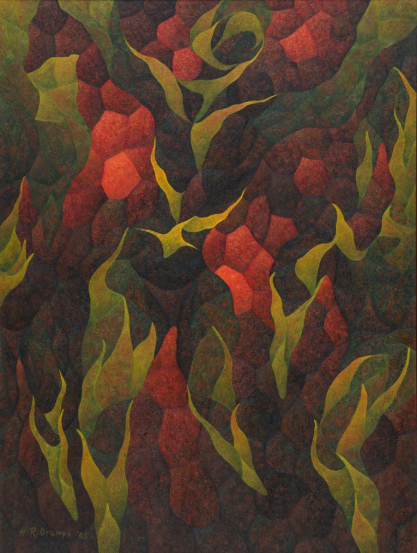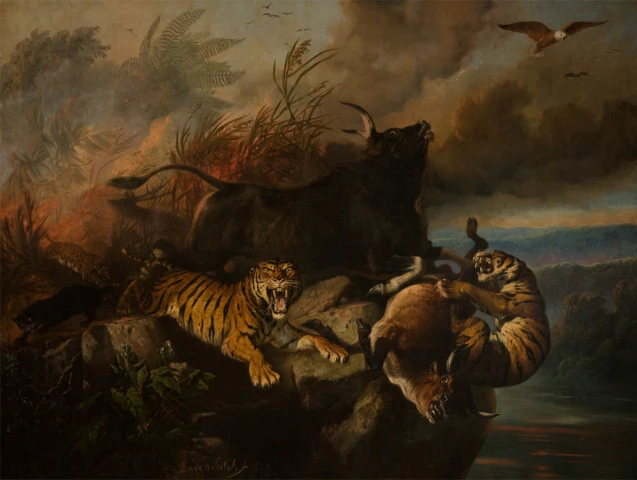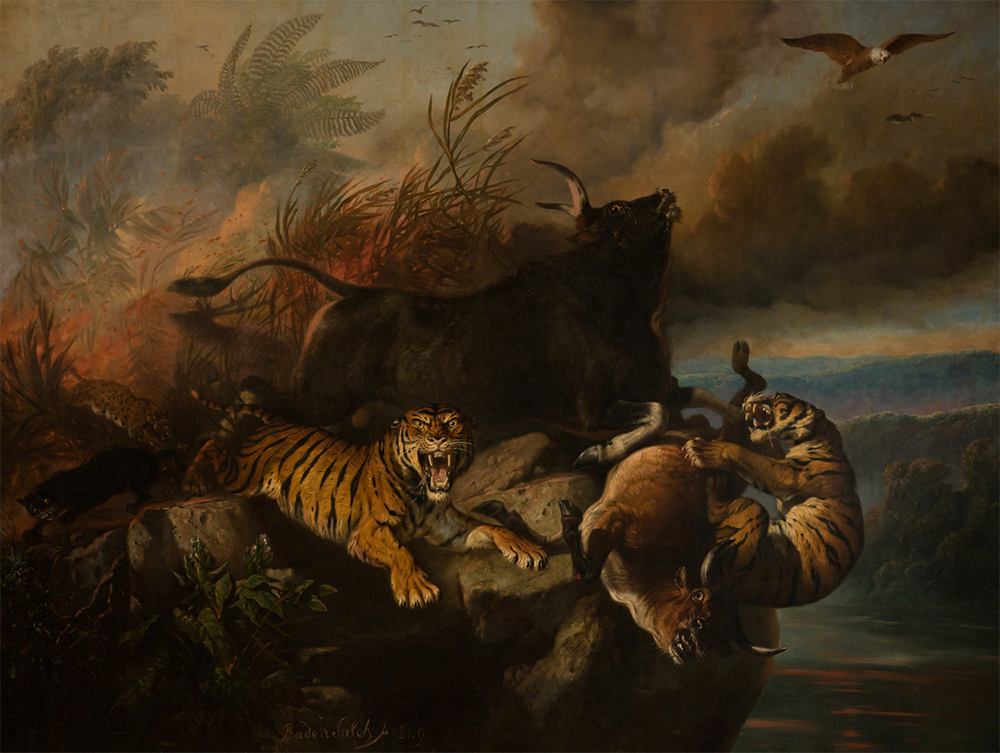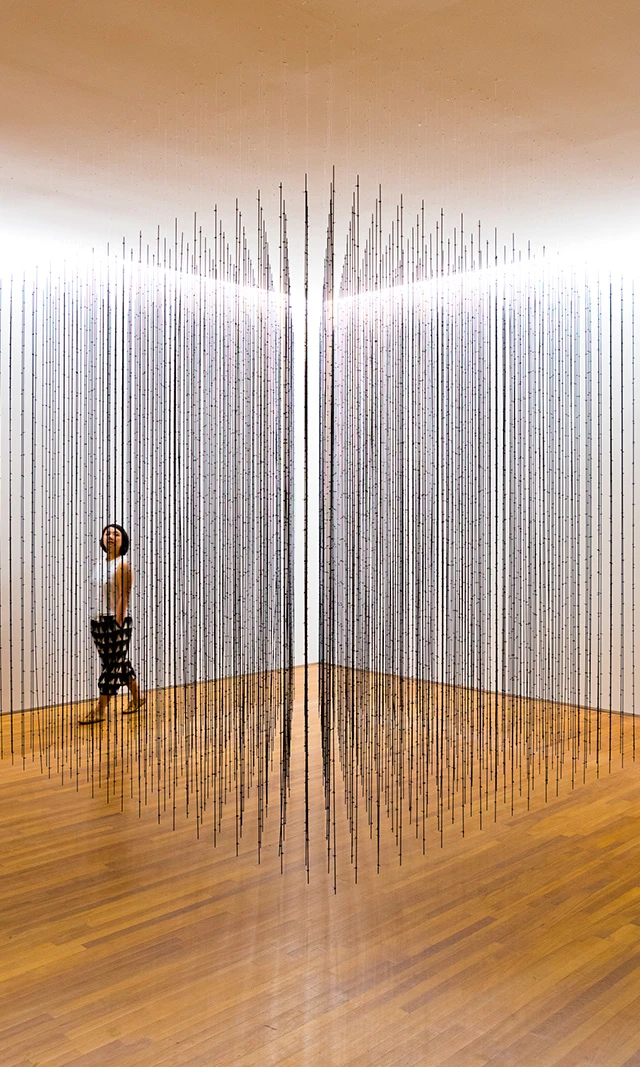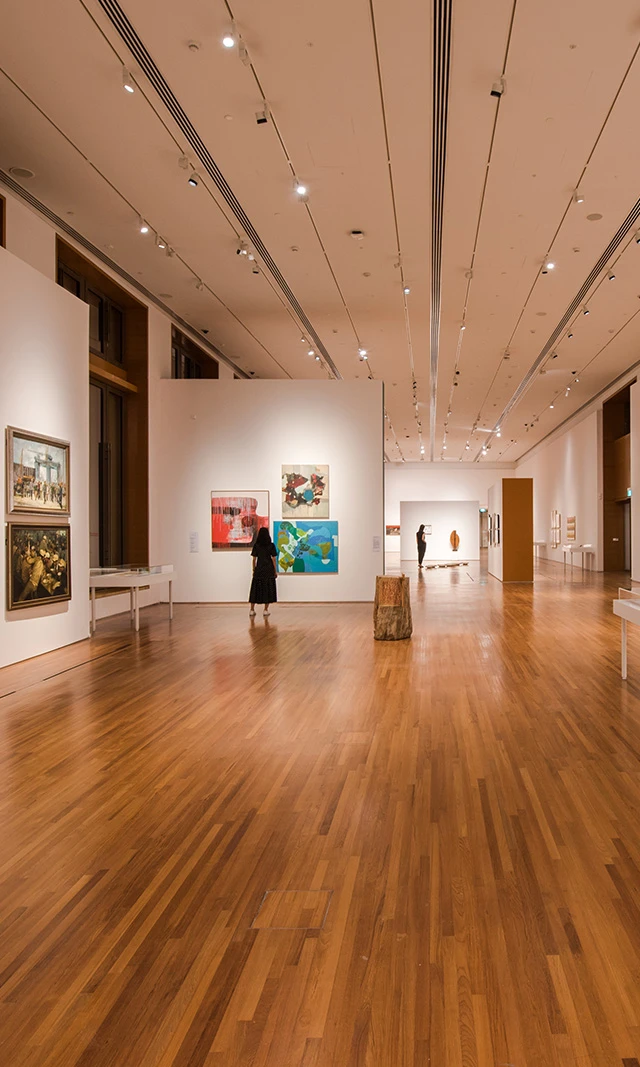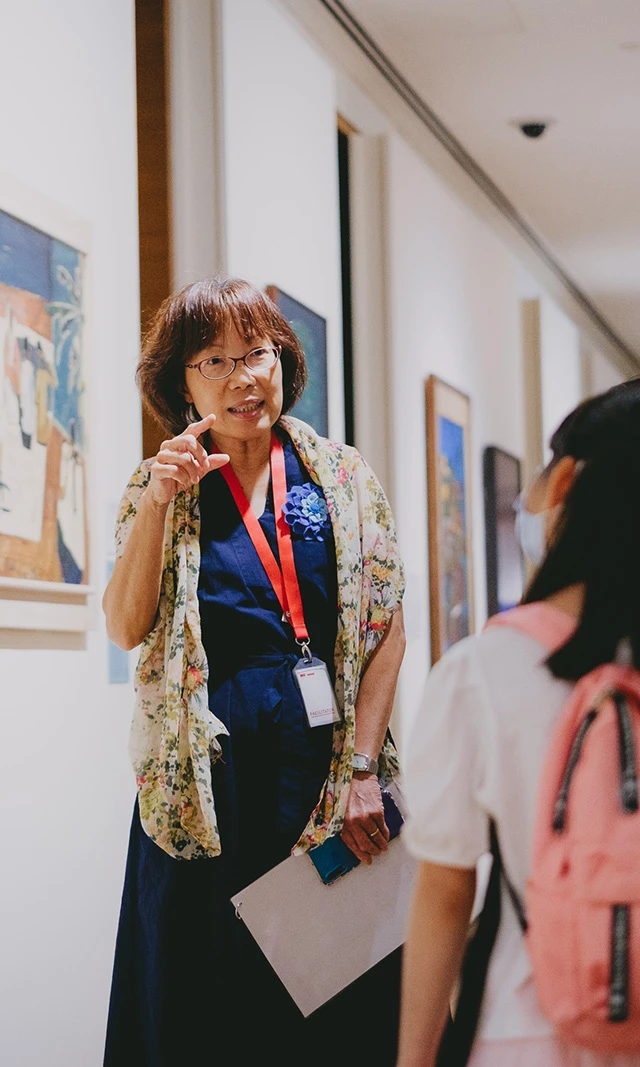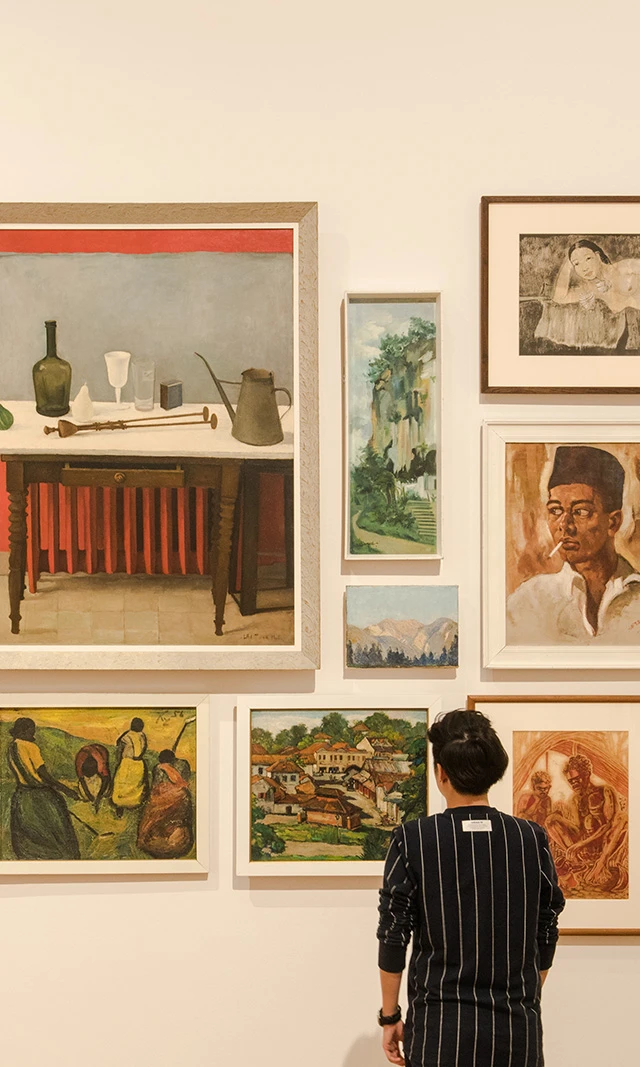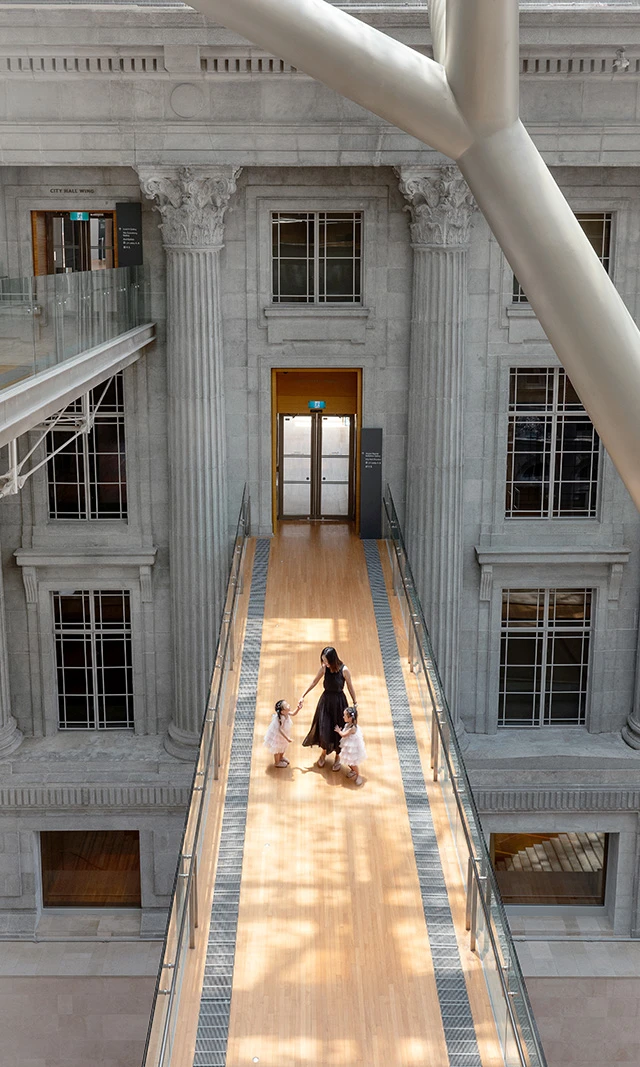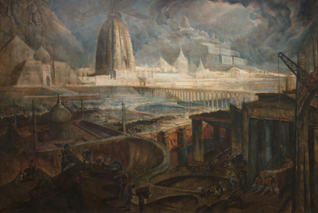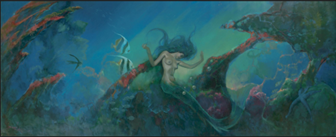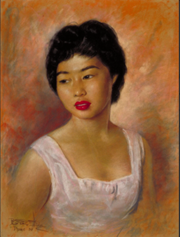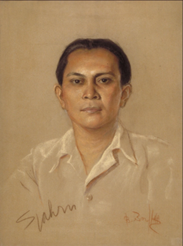Discover Basoeki Abdullah at National Gallery Singapore
SINGAPORE, 9 May 2025 – National Gallery Singapore presents Diplomacy and Desire: Basoeki Abdullah in Singapore, a solo exhibition by celebrated Indonesian painter Basoeki Abdullah (1915–1993), known for his striking portraits and high-profile patrons across postcolonial Southeast Asia.
Opening on 9 May 2025, the exhibition offers a provocative look at power, beauty, and diplomacy in the region through the eyes of one of the region’s most sought-after portraitists. It explores how Basoeki navigated his roles as a high-society painter and a cultural producer attuned to the “geopoetic” agency of his art – deploying it to cultivate regional imaginations, support decolonisation efforts and navigate geopolitical and ideological differences.
Focusing on Basoeki’s relationship to Singapore, where he lived between 1958 and 1960, Diplomacy and Desire centres on significant two artworks he gifted to the country. Labour was presented to the City Council of Singapore in 1959 and received by then-Minister of Culture S. Rajaratnam, while Struggle for the Re-establishment of the Democracy and the Right for the People was donated to the National Museum Art Gallery in 1981. This period coincided with Singapore’s move towards self-governance in 1959.
The exhibition also features a selection of Basoeki’s pastel drawings of attractive women and luminous portraits of political figures in post-war Singapore – works that cemented his reputation as one of the region’s most sought-after painters. These pieces explore the entanglement of aesthetics and influence, revealing how beauty and power were negotiated through art. Drawn from Singapore’s National Collection, these works were part of a significant 1994 donation by Lok Bok Sim to the Singapore Art Museum. Basoeki’s patrons included some of the most prominent regional leaders of the time, such as Indonesian Presidents Soekarno and Soeharto, Philippine President and first lady, Ferdinand and Imelda Marcos, King Bhumibol Adulyadej and Queen Sirikit of Thailand, Prince Norodom Sihanouk of Cambodia and Sultan Hassanal Bolkiah of Brunei.
For the first time ever, archival photographic assemblages made by the artist, on loan from Museum Basoeki Abdullah, Indonesian Heritage Agency, are also being shown publicly.
The exhibition, which runs till 1 February 2026, is presented as part of the fifth edition of Dalam Southeast Asia, located in the UOB Southeast Asia Gallery. This space is used for the Gallery’s experimental projects, advocating for lesser-known narratives.
| Diplomacy and Desire: Basoeki Abdullah in Singapore | |
| Date and Time: | 9 May 2025 until 1 February 2026 Daily, 10am - 7pm |
| Venue: | Dalam Southeast Asia, UOB Southeast Asia Gallery, National Gallery Singapore |
| Admission Details: | Free for Singaporeans and Permanent Residents |
| Programmes | |
|---|---|
| Curator Tour | Diplomacy and Desire: Basoeki Abdullah in Singapore | |
| Date and Time: | 11 May 2025, 2pm – 3pm |
| Venue: | Dalam Southeast Asia, UOB Southeast Asia Gallery, National Gallery Singapore |
| Admission Details: | Join exhibition curator Kathleen Ditzig for a special tour of Basoeki’s alluring portraits and landscapes. Learn about the exhibition and explore how “geopoetics” relate to postcolonial nation-building in Singapore and Southeast Asia. Register here. |
Annex: Diplomacy and Desire Exhibition Highlights
Basoeki Abdullah. Labour. c. 1950s. Oil on canvas, 195 x 293 cm. Gift of Ministry of Culture. Collection of National Gallery, Singapore. Image courtesy of National Heritage Board, Singapore | Labour, which spans almost three metres long, was one of two gifts that Basoeki gave to Singapore. The artist gifted it to the City Council of Singapore in 1959, after Singapore achieved self-governance that year. When the artist returned to Singapore in 1989 to seek out this painting, he claimed that the painting represented the future of Singapore. In fact, the structures in the painting reference key historic sites, such as the temples for Ramesses II and Queen Nefertari at Abu Simbel, which had to be relocated in 1964 as part of Nassar’s ambitious Aswan Dam project (1970). This relocation project, as well as the monuments that populate the background of the image, which recall Borobudur and sikhara, may speak to how Basoeki Abdullah was inspired by the possibilities for allied progress between “coloured nations” that were shared at the seminal Bandung Conference of 1955. |
Basoeki Abdullah. Struggle for the Re-establishment of the Democracy and the Right for the People. 1981. Oil on canvas, 200 × 490 cm. Gift of the artist. Collection of National Gallery Singapore. | The painting is supposedly inspired by the formation of the Association of Southeast Asian Nations (ASEAN) in 1967. The five founding nations are depicted as pearls, which according to the artist, are gems produced out of a painful process for oysters – a possible oblique reference to the difficult process of decolonisation experienced across the region. |
Basoeki Abdullah. Untitled (Chinese Woman with Red Lips). 1958. Pastel on paper, 65.2 × 48.6 cm. Gift of Mr. Lok Bok Sim. Collection of National Gallery Singapore | In 1957, the year before he moved to Singapore, Basoeki had visited the island and shared with the local press at the time that Singapore girls made ideal models. Drawn in Singapore in 1958, this portrait is of one of a number of the portraits of local models that Basoeki drew while he was in Singapore. It is one of 27 pastel portraits that were part of a formative donation to Singapore Art Museum’s collection in 1994 by the art collector Lok Bok Simn. |
Basoeki Abdullah. Untitled (Man in White Shirt). Undated. Pastel on paper, 64.2 × Gift of Mr. Lok Bok Sim. 48.6 cm. Collection of National Gallery Singapore. Signed by Sutan Sjahrir and the artist. | Signed by the subject, Sutan Sjahrir, and the artist, this drawing is a historical document of their meeting. Sjahrir (1909–1966) was Indonesia’s first Prime Minister from 1945 to 1947 and founded the Socialist Party of Indonesia (PSI) in 1948. PSI was later banned by President Soekarno in 1960. Sjahrir is known for his advocacy of Western constitutional democracy. During his premiership, he successfully secured Dutch recognition of Indonesia’s authority in Java and Sumatra and worked to gain international recognition of Indonesia’s sovereignty, including at the United Nations. |
About Dalam Southeast Asia
Dalam Southeast Asia is the Gallery’s first-ever Project Space that features under-studied artists from the region and innovative curatorial approaches in the presentation of Southeast Asian modern and contemporary art. Located within the UOB Southeast Gallery, Dalam Southeast Asia enables the public to gain an ‘inside look’ into the fresh curatorial approaches against the backdrop of key masterpieces in Singapore’s National Collection. A majority of the artworks in Dalam Southeast Asia exhibitions will be drawn from the National Collection as well, including many never-before-seen works, recent acquisitions, and donations.
About Basoeki Abdullah
Basoeki Abdullah (1915‒1993) was once described as "the Rembrandt of the East”. He achieved international fame when he won an art contest held for the coronation of Queen Juliana of Amsterdam in 1948. Basoeki described his style as “Romantic Realism.” This term brings together “Romanticism,” the late 18th-century European art movement that emphasised individualism and emotion over rationalism, and the artist’s personal desire to evoke the realities of postcolonial movements. Today, his artworks can be found in national collections across Southeast Asia.

